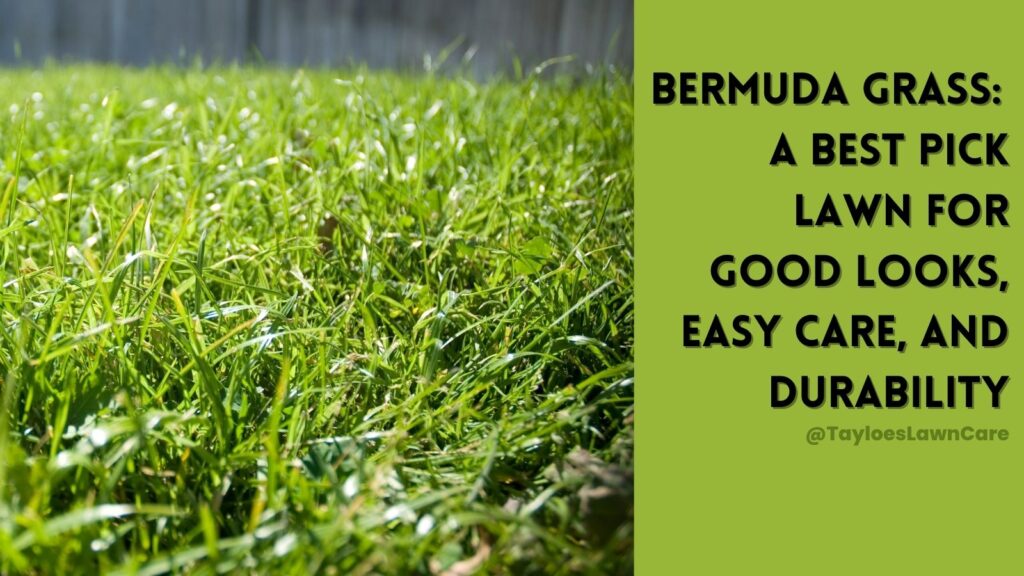Last Updated on: 8th November 2023, 11:53 am
As we stand at the checkout counter, waiting to pay for our groceries, our eyes wander to the tantalizing array of mint gum neatly arranged in front of us. Peppermint, wintergreen, and spearmint—the familiar words printed on those gum wrappers may have become so commonplace that we hardly stop considering their differences. Yet, behind those words lie distinct flavors, scents, and even botanical origins. Today, let’s embark on a journey to uncover the secrets of these minty heroes—peppermint, wintergreen, and spearmint—as we delve into their unique characteristics and unravel the nuances that set them apart.
Peppermint, spearmint, and wintergreen are all members of the Lamiaceae (mint) or Ericaceae (wintergreen) family. Technically, wintergreen is not a true mint, despite its name. Gardeners plant these species for their aromatic foliage and attractive flowers. They are also easy to grow and care for, making them ideal for herb and pollinator gardens.
Before we start, let’s mention an important characteristic. Mint is an aggressive grower and can be invasive. We suggest it as a ground cover if you have a large area to cover quickly for the prevention of soil erosion. Otherwise, pop it into a large container to enjoy growing mint without the “takeover” of your garden beds.
This article compares and contrasts these three plants to help you determine which one may be the best fit for your garden.
What Is Peppermint?
Peppermint (Mentha piperata L.) is a fascinating hybrid species that likely resulted from the natural crossbreeding of watermint (Mentha aquatica) and spearmint (Mentha spicata). This herbaceous perennial plant can reach up to three feet, boasting ovate to lanceolate-shaped leaves with a toothed edge and a distinctive, strong peppermint scent.
The lush foliage of peppermint displays spikes of delicate pink or lilac-colored flowers, adding a touch of beauty to its already captivating presence. Beyond its aesthetic appeal, peppermint has many uses, especially in the culinary world. Its leaves have a refreshing and cooling flavor. That refreshing taste makes them famous for flavoring teas, creating invigorating syrups, infusing delightful candies, and enhancing a wide array of desserts.
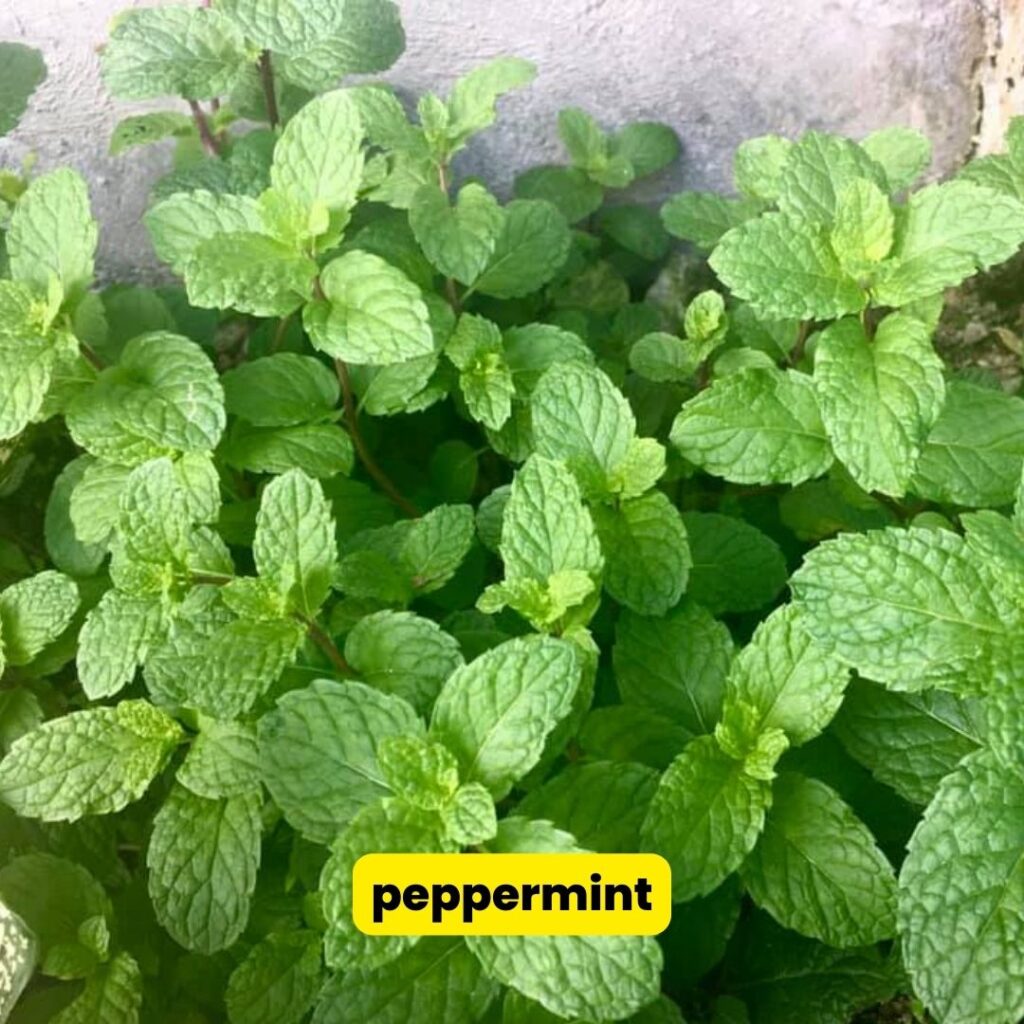
What Is Spearmint?
Spearmint (Mentha spicata) originates in Europe and Asia, having successfully naturalized in various parts of North America. Like peppermint, spearmint is an herbaceous perennial, typically growing to two to three feet. Its leaves take on an appealing ovate shape with a toothed edge, emanating a gentle, mild spearmint scent when crushed or brushed against.
The foliage of spearmint is often accompanied by spikes of lovely pink or lilac-colored flowers, bestowing a touch of elegance to the plant. This aromatic herb has earned a prominent place in culinary endeavors, where its refreshing and subtly sweet flavor shines. Spearmint leaves are frequently employed to add a delightful twist to teas, syrups, candies, and many desserts, captivating taste buds with their unique charm.
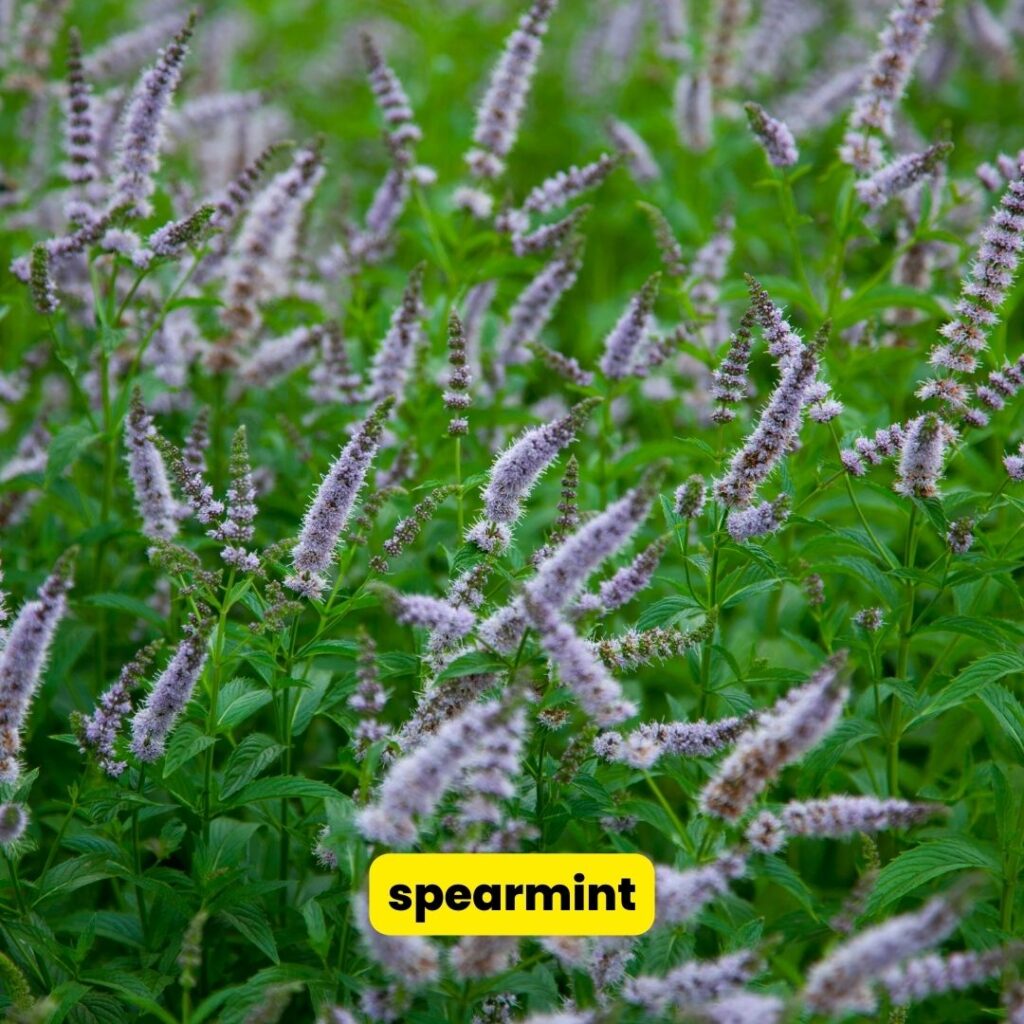
What Is Wintergreen?
Wintergreen, scientifically known as Gaultheria procumbens, distinguishes itself from the minty duo of peppermint and spearmint by belonging to the Ericaceae family. This evergreen shrub, native to North America, boasts a more compact stature, typically reaching 6 to 12 inches. Wintergreen leaves are characterized by their elliptic shape, glossy appearance, and enticing wintergreen scent that exudes from their surface.
While the plant may not showcase vibrant flowers, it compensates with the occasional emergence of terminal clusters of white or pinkish-white blooms and colorful red berries. These add a delicate touch to its dense foliage. Wintergreen has garnered attention for its aromatic properties and is often harnessed to impart a distinct minty flavor to teas, syrups, and candies. Beyond its culinary applications, wintergreen has also found use in traditional medicine, thanks to its reputed soothing properties and its association with muscle ache relief.
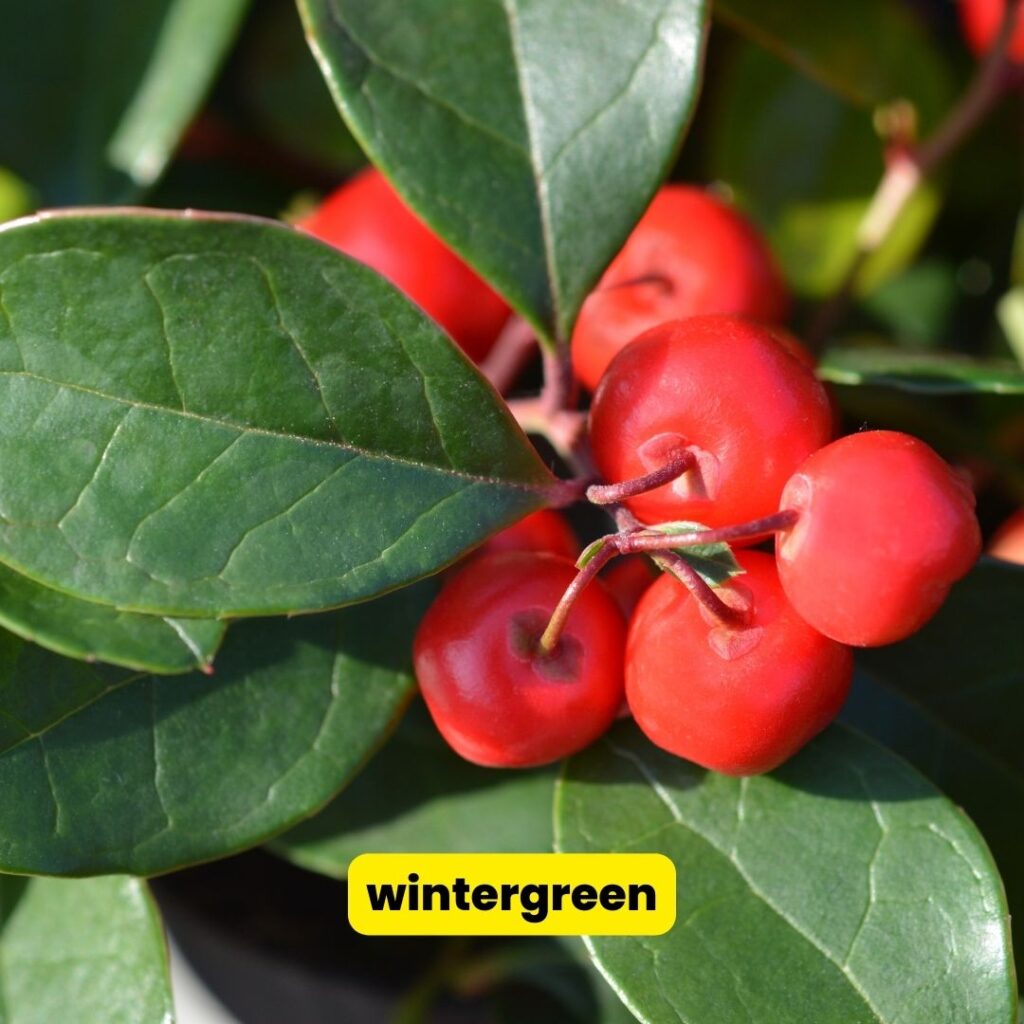
Growing Conditions for Peppermint, Wintergreen, and Spearmint
All three plants prefer full sun to partial shade and well-draining soil with a neutral pH between 6.0 to 7.0. They are hardy in USDA zones 3 to 9 and are low-maintenance plants that are easy to care for. Simply water the plants regularly, especially during dry spells, and fertilize them with a balanced fertilizer once a month during the growing season. Prune the plants after flowering to encourage bushiness and prevent legginess.
How to Grow Mint Plants
Peppermint, spearmint, and wintergreen differ in their growth rates and tendencies. Let’s delve into the growth habits of each mint and explore why growing spearmint and peppermint in containers can be a wise choice to control their growth.
Peppermint has both vigorous growth and rapid spread. It tends to send out long underground runners called stolons, allowing it to colonize and establish new plants. This characteristic can make peppermint invasive if left unchecked in garden beds or open spaces. As a result, containing peppermint’s growth is often necessary to prevent it from overtaking other plants. Growing peppermint in containers is an effective way to confine its spread. By planting it in a pot or container, you can keep its roots and runners restricted, preventing it from spreading uncontrollably in the garden.
Similarly, spearmint has vigorous growth and can spread via underground rhizomes. While it may not spread as rapidly as peppermint, it can still become invasive in the garden if not properly managed. Growing spearmint in containers allows it to control its growth and prevent it from taking over garden beds or competing with other plants for resources. By confining the plant’s roots within a container, you can limit its spread and maintain better control over its growth.
Two Mint Species Are Perfect For Container Gardening
Container gardening offers several benefits when cultivating mints like peppermint and spearmint. It provides an effective barrier to restrict the growth and spread of these plants, keeping them contained within a defined space. Additionally, containers allow for easier maintenance, as you can monitor and manage the plants’ growth more efficiently. You can also control the soil conditions, ensuring the mints have well-draining soil and appropriate moisture levels.
When selecting containers for growing peppermint and spearmint, opt for larger pots or containers to accommodate their vigorous growth and root systems. This will provide ample space for the plants to thrive while keeping their growth in check. Ensure that the containers have sufficient drainage holes to prevent waterlogging, which can lead to root rot.
To grow peppermint and spearmint in containers, fill the pots with well-draining soil and plant the mints at the appropriate depth, leaving a few inches of space between the soil surface and the container’s rim. Place the containers in a location that receives at least six hours of sunlight daily. Regularly water the plants, keeping the soil consistently moist but not soggy.
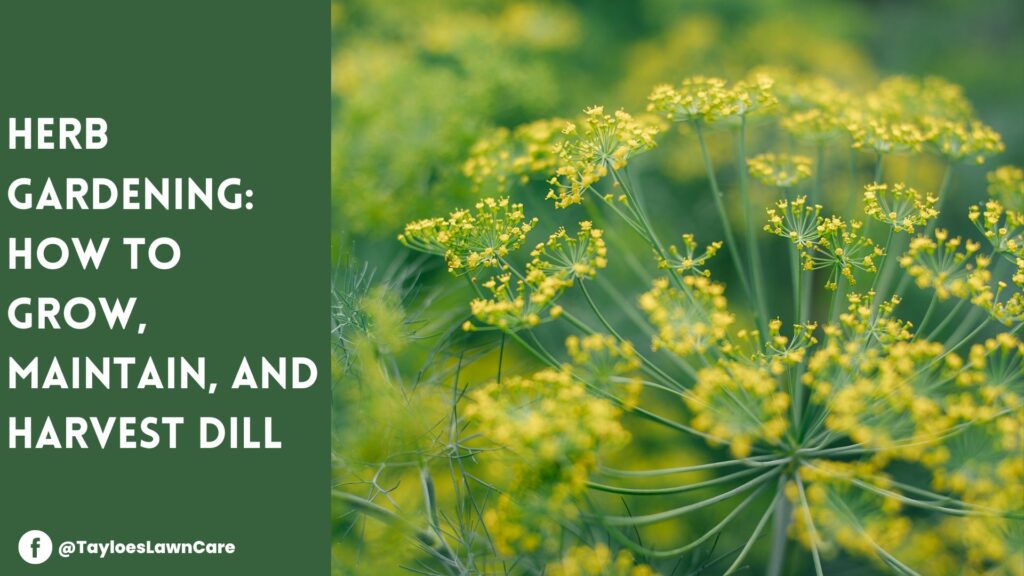
The Takeaway: Which Mint Do You Prefer?
Peppermint, spearmint, and wintergreen are all fragrant and attractive plants that are easy to care for and maintain. Will you choose peppermint for its strong and fresh aroma? Or spearmint for its milder and sweeter scent? Perhaps you prefer wintergreen for its unique wintergreen scent? Of course, you can’t go wrong! Plant whichever suits you.
These plants will surely add an attractive and aromatic touch to your garden. Just be sure to select a location with well-draining soil in a sunny or partially shaded area and water the plants regularly to keep them healthy and vigorous.
Did you love this information? Then please follow Tayloe’s Lawn Care Services, LLC, Aulander, NC on Facebook. We post often, sharing landscaping, gardening, and outdoor living tips.
Author Profile

- Deborah Tayloe is the CEO and co-founder of Tayloe's Lawn Care Services, LLC. She has a B.S.Ed and holds certificates in soil and water management and herbology from accredited programs.
Latest entries
 Trees and ShrubsApril 22, 2025Boxwood Blight: Early identification and isolation
Trees and ShrubsApril 22, 2025Boxwood Blight: Early identification and isolation Flower GardenApril 8, 2025John F. Kennedy Rose: Hybrid tea rose with elegant white blooms
Flower GardenApril 8, 2025John F. Kennedy Rose: Hybrid tea rose with elegant white blooms Vegetable GardenMarch 24, 2025Trellis vegetables provide an abundant vertical garden harvest
Vegetable GardenMarch 24, 2025Trellis vegetables provide an abundant vertical garden harvest GardeningMarch 17, 2025Are coffee grounds good for compost?
GardeningMarch 17, 2025Are coffee grounds good for compost?






